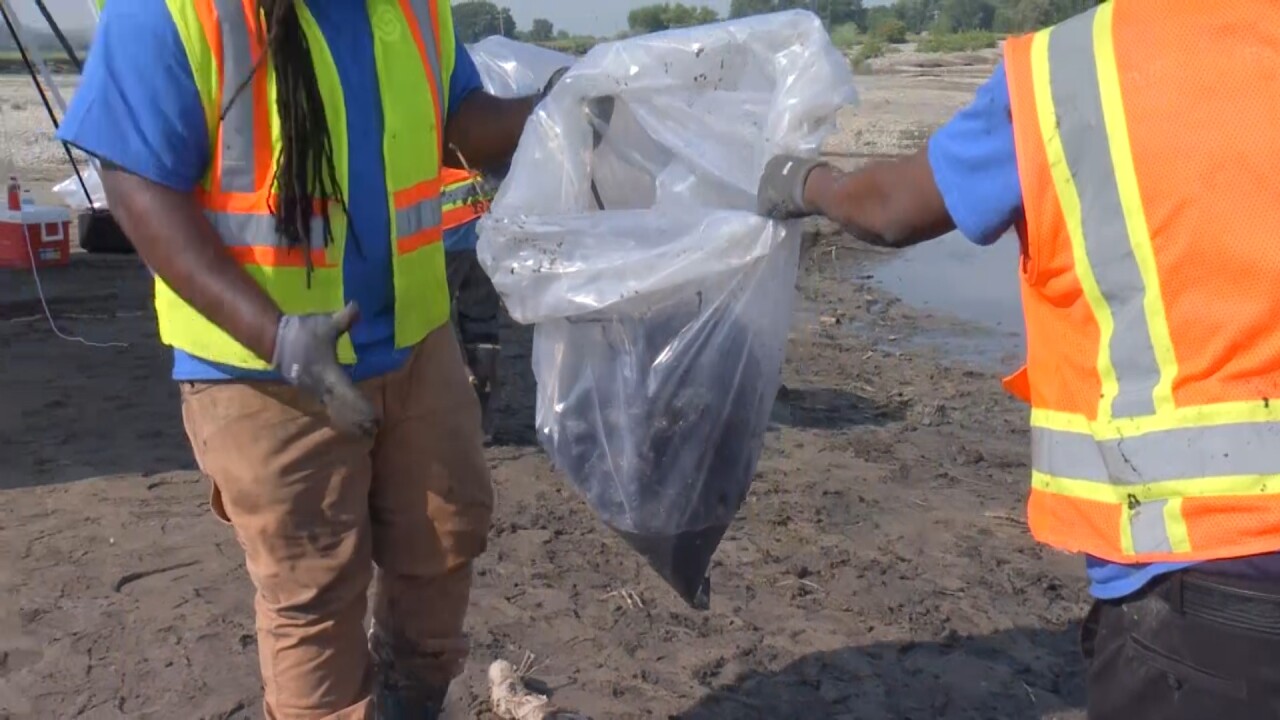On Wednesday, Stillwater County train derailment cleanup crews started launching boats from Riverside Park in Laurel, moving farther downstream on the Yellowstone River from the derailment site to continue the cleanup process.
As of Thursday afternoon, a cleanup team of about 150 people who are working 12-hour days, seven days a week, have collected over 120,000 pounds of asphalt material.

“The emergency response phase is to collect as much asphalt material as possible,” said Meg Broughton with the U.S. Environmental Protection Agency. "This is hard work, it's hot work, but it's paying off."
Crews started marking miles downstream from the train derailment, with the site of the derailment being mile zero. Thursday morning, cleanup crews took MTN News and other media outlets to an island at mile 45 near Laurel to get an up-close look at the cleanup of an estimated 500,000 pounds of asphalt that spilled from the train cars that ended up in the river.

“The asphalt is in a variety of different sizes. There are very small pieces. There are very large pieces. Right now, the crew is focused on getting the largest of those pieces,” said Andy Graham with Polaris Applied Sciences, a Washington state-based contractor working on the cleanup.
Asphalt stuck on the river rock that crews cannot easily remove is referred to as actionable asphalt.

“As time allows and as safety allows, we’ll attempt to get the rest of the actionable asphalt,” Graham said.
Actionable asphalt is lower on the list of priorities for the cleanup crews compared to the large chunks of sticky asphalt.

“At this point, we don’t know how much asphalt material left is actionable. And by actionable, it means that we can pick it up without doing more harm to the environment than good,” Broughton said.
The exact amount of asphalt material spilled from the train cars has not been released.
Kevin Stone with the Montana Department of Environmental Quality said the agency has stopped water quality testing but will stick around for the entire cleanup.
“We still are in kind of the emergency cleanup phase of this incident. The state will be involved for the long haul, in kind of making sure this cleanup gets to its completed point,” Stone said.
Montana Fish, Wildlife and Parks crews have collected fish from the river to be tested for human consumption safety.
Fifteen animals have been affected by the asphalt material, with seven snake deaths and seven bird deaths reported. One snake was found alive and was released back into the environment.
Related stories:
Train derails into Yellowstone River in Stillwater County
Officials: Final rail car removed from Yellowstone River at derailment site
Train cars cleared from Yellowstone River near Reed Point




